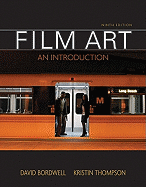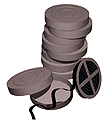
- Film as art: Creativity, Technology, and Business, 2
- The SIgnificance of Film Form, 56
- Narrative as a Formal System, 78
- The Shot: Mise-en-Scene, 118,
- The Shot: Cinematography, 167
- The Relation of Shot to Shot Editing, 223
- Sound in Cinema, 269
- Summary: Style as a Formal System, 312
- Film Genres, 328
- Documentary, Experimental and Animated Films, 349 (The River, 1937)
- Film Criticism: Simple Analyses, 396
- Film Art and Film History, 454.
The art and technology of films & filmmaking
![]() David Bordwell & Kristin Thompson, Film Art: An Introduction.
David Bordwell & Kristin Thompson, Film Art: An Introduction.
New York: McGraw Hill, 2010. 9th Edition.
Film is a three part endeavor:
|
||

|
||
Content |
Markets | |
One: Creativity, Technology, and Business
"The art of film depends of technology."
p. 48.
Sometimes the decisions have to do with the business side of the production."
p. 3.
"These decisions affect what we see and hear in the finished film."
Form and Style are basic "aspects of film art."
Mann:
"Film doesn't record what our eyes can see at night."
p. 5.
"Films are everywhere now, almost as widely available as print or music....
Unlike other art forms"...movies require much more....the camera is based on a fiendishly complex technology."
"technology and business –shape film as art."
p. 8.
"Illusion Machines"
Machines that Use Film
"At all stages of a films life, machines move the film strip one frame at a time past a light source."
p. 9.
"The projector is basically an inverted camera with the light source inside the machine rather than the world outside."
"As we've seen, the standard projection rate for sound film is 24 fps [frames per second], and the shutter block and reveals each frame twice in order to reduce the flicker effect on the screen."
p. 9.
"Usually image quality increases with the width of the film because the greater picture area gives the images better definition and detail. All other things being equal, 35 mm (millimeters are the metric for widths of the film strip) provides significantly better picture quality than does 16mm, and 70 mm is superior to both. The finest image quality currently available for pubic screenings is that offered by the Imax system."
p. 11.
"It's odd to think that our memories of the films we love have their origins in something as inert-looking as a strip of perforated celluloid. With all their appeals to our emotions and imagination, movies depend on some very tangible materials and machines. Without them, the filmmaker would be as lost as a painter without paint. Much of the artistry we'll be examining in chapter s to come depends on how filmmakers choose to use the palette provided by technology.''
p. 13.
Machines that use digital Media.
"When television became popular in the 1950s, its image was rather unclear and very small, in some cases only 10 inches diagonally. Early TV shows tended to rely on close shots which could be read easily on the small monitor."
Movie filmmakers began t do the same things in the 1960s and 1970s.
"There's also the matter of image proportions, and here again television exhibition exercised some influence."
"In response some filmmakers composed their shots to include a 'safe area' placing the key action in a spot that could fit snugly on the television screen."
p. 45.
"Filmic motion takes place in our brain, not on our retina."
p. 48.
Film as a medium of expression.
An analysis of the documentary film The River, 1937.



